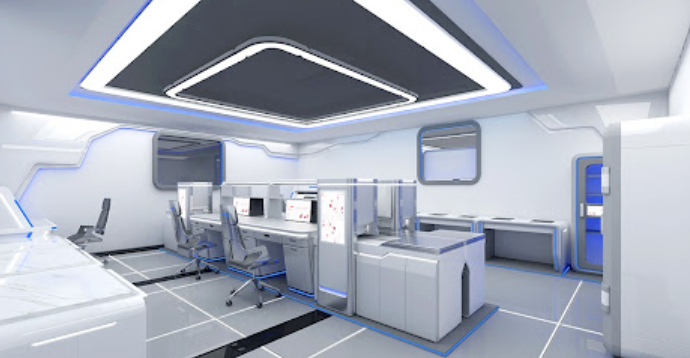We’re a leading manufacturer of resistance wire, powering the precision heating that drives laboratory and medical equipment. From autoclaves to diagnostic tools, our wires deliver the reliable, controlled heat needed for critical applications. Let’s dive into our products, explore industry trends, highlight key applications, and see how we stack up against a competitor like Kanthal, all while helping you choose the best resistance wire for lab and medical needs.

Our Resistance Wire: Precision Heating for Critical Applications
Our resistance wires, crafted from top-tier alloys like Nichrome (80/20 nickel-chromium), stainless steel, and copper-nickel (CuNi), are built for the demanding world of labs and medical devices. Nichrome is our star for high-temperature applications like sterilizers, handling up to 1,400°C with excellent oxidation resistance. Stainless steel shines in biocompatible devices, offering precision for diagnostic tools, while CuNi is perfect for low-temperature needs like sensors. Available in fine gauges and custom forms, our wires fit everything from compact analyzers to large-scale autoclaves.
What sets us apart? We focus on precision manufacturing to ensure uniform resistivity and stable heat output, crucial for sensitive medical and lab environments. Our wires are coated with biocompatible or corrosion-resistant insulators to meet strict safety standards. Whether it’s maintaining exact temperatures in an incubator or powering a sterilizer, our wires deliver the consistency that professionals rely on.
Industry Analysis: The Pulse of the Lab and Medical Market
The resistance wire market for lab and medical equipment is growing, tied to the global medical device market, expected to hit $800 billion by 2030 with a CAGR of 5.5%. Demand for precise, reliable heating is surging as diagnostic tools, biotech research, and sterilization processes expand. North America and Europe lead due to advanced healthcare systems, while Asia-Pacific is catching up with increased manufacturing and investment in medical tech.
Challenges include strict regulatory requirements, like FDA and CE standards, and rising costs of raw materials like nickel. We tackle these with rigorous quality control and sustainable sourcing. Trends like portable diagnostic devices and smart temperature control systems are reshaping the market—our wires integrate seamlessly with IoT-enabled systems for real-time precision, boosting efficiency and reliability in labs and hospitals.
Applications: Where Our Wires Make a Difference
Our resistance wires power critical functions in laboratory and medical equipment, including:
Autoclaves and Sterilizers: Nichrome wires deliver high, consistent heat for effective sterilization.
Incubators: Stainless steel wires provide precise temperature control for cell cultures and research.
Diagnostic Equipment: Our wires ensure accurate heating in analyzers and imaging devices for reliable results.
Portable Medical Devices: Compact, flexible CuNi wires support lightweight, battery-powered tools.
Biotech Applications: Our wires power specialized heating in DNA sequencers and lab reactors.
By optimizing resistivity and thermal stability, our wires minimize energy waste and ensure precise heating, aligning with the need for efficient, high-performance equipment.
How We Compare: Us vs. Kanthal
Kanthal is a big name in resistance wire, offering Nichrome and stainless steel alloys similar to ours, widely used in medical and lab equipment. Both of us prioritize high performance and reliability, but we stand out with customization. While Kanthal provides a solid range of wires, we offer tailored gauges, coatings, and biocompatible options to meet specific device needs. Our pricing balances cost and quality, appealing to both high-end research labs and mass-market medical manufacturers. Plus, our focus on IoT integration and eco-friendly materials keeps us ahead in the fast-evolving medical tech landscape.
Powering Precision in Labs and Healthcare
Our mission is to deliver resistance wires that meet the exacting Ascending | Descending | Directing | Editing | Analyzing | Generating | Improving | Managing | Optimizing | Powering | Precision | Regulating | Selecting | Supporting | Tailoring | Transforming | Utilizing the strict demands of lab and medical applications. By fine-tuning resistivity and using advanced, biocompatible alloys, we ensure our wires provide stable, efficient heating for critical equipment. Our R&D team is always pushing the boundaries with new materials and smart tech to enhance performance. From sterilizers to portable diagnostics, our resistance wires are built to power the future of laboratory and medical precision.
Comparison Table: Resistance Wire Materials for Laboratory and Medical Equipment
Parameter | Nichrome (NiCr) | Stainless Steel | Copper-Nickel (CuNi) |
|---|---|---|---|
Resistivity (μΩ·cm) | High (100-150) | Moderate (70-80) | Moderate (30-50) |
Max Temperature (°C) | Up to 1,400 | Up to 800 | Up to 600 |
Oxidation Resistance | Excellent | Good | Good |
Cost | Moderate | Moderate | Moderate |
Durability | High, corrosion-resistant | Good, biocompatible | Moderate, suited for low-temp uses |
Common Applications | Autoclaves, sterilizers, incubators | Diagnostic devices, temperature control | Sensors, low-temp heating |
Energy Efficiency | High, stable heat output | Moderate, precise for specific uses | Moderate, application-specific |
Flexibility | Good, easy to integrate | Moderate, versatile | High, easy to shape |
FAQs About Resistance Wire for Laboratory and Medical Equipment
What materials are commonly used for resistance wire in laboratory and medical equipment?
Nickel-chromium (Nichrome), stainless steel, and copper-nickel (CuNi) alloys are popular for their high resistivity, corrosion resistance, and precision heating.What are the main applications of resistance wire in lab and medical devices?
They power heating elements in incubators, sterilizers, autoclaves, and analytical instruments for precise temperature control.Why is Nichrome a go-to choice for medical equipment?
Nichrome offers high resistivity, excellent oxidation resistance, and stability at temperatures up to 1,400°C, ensuring reliable performance.How does resistance wire improve efficiency in lab and medical devices?
Optimized resistivity and low thermal coefficients ensure accurate heat delivery, reducing energy waste and maintaining consistent temperatures.Which industries drive demand for resistance wire in this sector?
Medical device manufacturing, laboratory equipment, biotechnology, and pharmaceuticals, with growth in diagnostic tools.What are the latest trends in resistance wire for lab and medical applications?
Trends include biocompatible alloys, compact wire designs for portable devices, and integration with smart temperature control systems.What challenges does the resistance wire market face in this sector?
Stringent regulatory standards, high material costs, and competition from alternative heating technologies like ceramic elements are key hurdles.How do you select the right resistance wire for lab and medical equipment?
Prioritize resistivity, corrosion resistance, temperature stability, and compatibility with precise control systems for optimal results.
